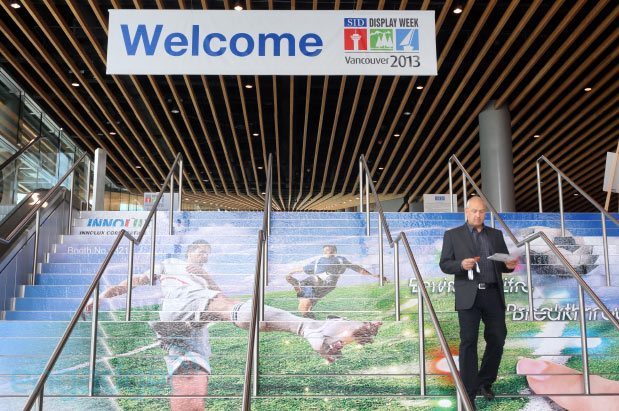
This article was originally published on www.display-central.com.
Having just returned from SID Display Week in Vancouver, I am both encouraged by the continual innovation and progress of display and related technologies, but troubled by many other factors that will affect the health of the display industry. And I am certainly not alone in this conclusion as many, many speakers touched on various aspects of this throughout the week.
Let’s start with OLEDs. While this is both a success story so far and there is a herd mentality to rush to build OLED fabs, it is far from certain that Samsung’s early success can be replicated by the industry. There is a battle underway for which backplane is best, LPTS or IGZO, and a there is a battle in the front plane approach (RGB OLED vs. white OLED and color filters). Not only is this a technology battle, but serious challenges remain in scaling the processes for larger panels and cost effective manufacturing.
Samsung’s OLED panels are believed to sell for quite a bit more than comparable LCD panels. That may offer some strategic value in the early stages of the market, but ultimately they will have to beat LCD on price and performance if they hope to win. As noted in David Barnes Display Daily column from yesterday (LCD Beats CRT, or the Woes of the Display Industry), LCDs have beaten CRTs but at the price of becoming a commodity.
Compounding the problem, we may now be seeing a serious threat to OLED coming from LCDs with quantum dot technology. Many of the advantages of OLED are being eaten up by LCDs – just as they have every other challenger. Is the window for OLED closing?
Further, many of the display growth markets are now mature, like PCs and TVs. Grow is flat or declining. Yes, tablets and smartphone panels are coming on strong, but they don’t produce the display panel area growth that will be needed.
Investment and the crystal cycle is another concern for the industry. Currently there is too much capacity chasing too little demand. In a rational market, that means producers slow production and stop or delay investment in new plant and equipment. But the display industry does not act very rationally. National political agendas can trump economic rational leading to an “arms race” in displays. Producer A wants to slow production and delay a fab, but fears producer B won’t act rationally and will continue to invest and produce. That’s the market share game panel makers have pursued for well over a decade. Fear or policy drive decisions. That has resulted in what Barnes calls “a charity display industry.” At some point, the irrational forces driving the market decisions cause the bubble to burst.
This may be exactly the situation we are in. That’s why I am a bit worried and why IHS Business Conference organizer Sweta Dash called for the industry to cooperate.
So, the display industry can continue down the path it has been following – and expect the same results. Or, it can try to genuinely change the game – first by making business decisions, not political decisions, and secondly, by focusing on cooperation and technology integration in the display solution space. There is some great technology out there that does not cost billions to add significant value to the industry. Many we should turn away from a focus on the multi-billion dollar bets and make a lot more multi-million dollar bets. That’s my food for thought for the day. – Chris Chinnock

